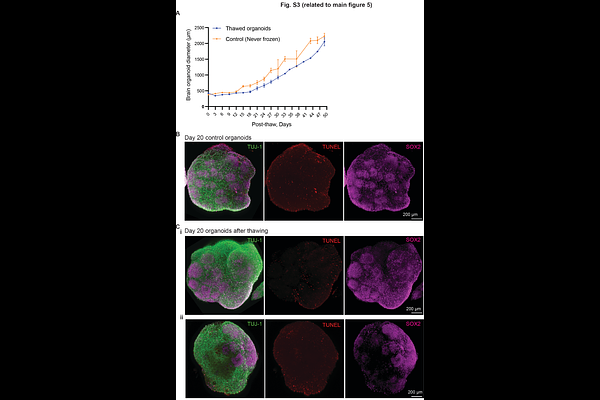Reliability of high-quantity human brain organoids for modeling microcephaly, glioma invasion, and drug screening

Reliability of high-quantity human brain organoids for modeling microcephaly, glioma invasion, and drug screening
Ramani, A.; Pasquini, G.; Gerkau, N.; Vinchure, O. S.; Gabriel, E.; Rothenaigner, I.; Lin, S.; Altinisk, N.; Rathinam, D.; Mirsaidi, A.; Goureau, O.; Ricci-Vitiani, L.; Q. d'alessandris, G.; Pallini, R.; Wollnik, B.; Muotri, A.; Jurisch-Yaksi, N.; Rose, C. R.; Busskamp, V.; Hadian, K.; Gopalakrishnan, J.
AbstractBrain organoids offer unprecedented insights into brain development and disease modeling and hold promise for drug screening. Significant hindrances, however, are morphological and cellular heterogeneity, inter-organoid size differences, cellular stress, and poor reproducibility. Here, we describe a method that reproducibly generates thousands of organoids across multiple iPSC lines. These High Quantity brain organoids (Hi-Q brain organoids) exhibit reproducible cytoarchitecture, cell diversity, and functionality, are free from ectopically active cellular stress pathways, and allow cryopreservation and re-culturing. Using patient-derived Hi-Q brain organoids, we recapitulated distinct forms of microcephaly pathogenesis: primary microcephaly due to a mutation in centrosomal CDK5RAP2 and progeria-associated microcephaly in Cockayne syndrome. When modeling glioma invasion, hi-Q brain organoids displayed a similar invasion pattern for a given patient-derived glioma cell line. This enabled a medium-throughput screen to identify Selumetinib and Fulvestrant, which also perturbed glioma invasion in vivo. Thus, the Hi-Q approach can easily be adapted to reliably harness brain organoids\' utility for personalized disease modeling and drug discovery.